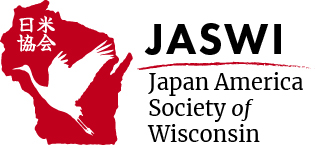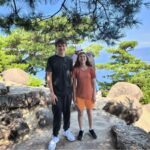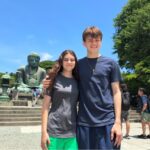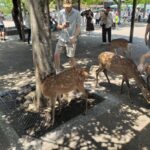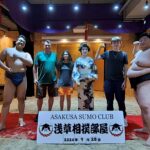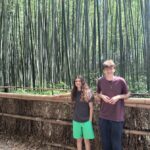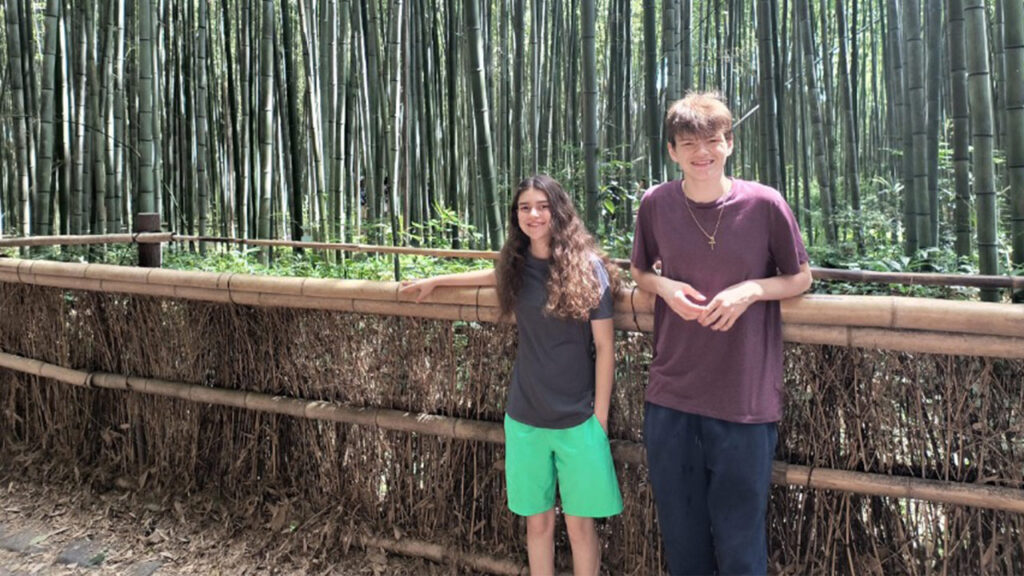
Exploring Japan: Bart’s Family Trip
I asked my kids where they wanted to go for vacation. My 13-year-old daughter said Japan! She loves anime and wanted to see locations in her shows and see the anime museums. My 15-year-old son wanted to go to Tokyo to see a huge city. I was interested in feudal Japan and Hiroshima and thought this would be a fun destination.
In planning the trip, it was cheapest to fly in and out of Tokyo. With the bullet trains, I thought I could manage traveling and returning to Tokyo. We started in Tokyo and traveled in the general direction of Tokyo planning on returning by bullet train to fly back. Along the way, we planned stops at Fuji-Q Highlands, a roller coaster park in the foothills of Mt. Fuji, 3 nights in Kyoto, 2 nights in Hiroshima, which was about 4 hours from Tokyo by bullet train (+ about another ½ hours from Tokyo Station to the airport).
Traveling with 3 people was slightly more complex than with 2. Some hotels have 3 beds, but AirBnB was cheaper. We spend most of the nights in Airbnb rentals. The owners were extremely helpful and they all provided us with directions and instructions for the places in English. You can see the location on a map and determine if the area is where you want to be in proximity to restaurants, tourist attractions and transportation. Normally in the US I use VRBO. VRBO is much less commonly used in Japan and what they do have was also listed on Airbnb, usually for less.
I’d recommend planning out much of your time. I purchased my Sumo Wrestling Experience 2 weeks in advance. I had been trying to work out my schedule and noticed that most of the show times were selling out. Waiting until the last minute will likely mean you miss out on attractions. Also, there are many online reviews. Many of the museums we went to were small. Traving for an hour to see an attraction that takes half an hour is not the best use of time. Most attractions we went to, I did not book in advance. The ones that offer a time to get in seem to be the most likely to sell out. Purchasing in advance can also speed up the process. Some attractions had long lines for tickets.
Some resources I used were Lonely Planet Japan, Tokyo Underground, and looking for recommendations on the internet. The guidebooks recommend places to stay and restaurants. I didn’t look at any of those. Airbnb was good and most restaurants have photos outside to show their menu. We just looked for signs of things we would like to eat and had no issues finding great food. Traveling off of the main streets we found great restaurants that were inexpensive. Typically meals for the 3 of us were around $35 total for dinner and a soda. Water are tea were always also available.
I recommend packing light, as you will most likely be carrying your luggage around. Every Airbnb we stayed at had a washing machine. None had driers. I’d recommend faster-drying clothes if possible.
Upon arriving in Japan, there are several things to do at the airport. Immigration and Customs took about an hour. The Travel Japan app from the government is highly recommended over filling out paper forms when you arrive. At the airports, you can purchase tourist train passes. These can only be purchased at the airport (as far as I can tell) by people with a foreign passport. The Japan rail pass is useful if traveling out of the city. Determine how much you will use it and if it is worthwhile. I saved about $20 per person by not purchasing it. The value will depend upon how much you use it. It is good for 7 days or 14 days, so knowing when you will use it will help decide its value. If you don’t purchase the tourist pass, the Suico pass is strongly recommended. It can be used on local trains and buses throughout Japan. It can also be used in vending machines, so it can be very handy.
Before leaving the airport, get some cash. While credit cards are common, many places only accept cash. I used about about 50,000 yen over the 12 days we were there to cover 3 people.
I recommend printing out all the directions you will need including directions to the place you are staying with train or bus routes. I had issues with my mobile phone that took a couple of days to resolve. Free Wifi is pretty common, but not everywhere. If you depend on the phone and don’t have a connection you may have difficulties trying to find and connect to wifi (carrying luggage can add to the challenge especially on crowded trains where you can’t sit). After the long flight and time zone changes, you are likely not to be at your sharpest. Best if you can make it easy. For my mobile phone, I had Mint Mobile and purchased the Minternational pass. I was unable to connect to a mobile network until the 3rd day I was there. Without the printed instructions, it would have been very challenging to find our place.
Using google maps was great for finding trains. The one suggestion is to be sure if your directions say to take a train at a specific time, make sure you are on that train. Some trains include local and express trains. The express trains stop at the big stations while the local trains stop at the smaller ones. If you are early or late and jump on the next train, it may not take you to where you want to go.
I would not recommend renting a car for Americans. Driving on the left side of the road takes some getting used to, traffic can be heavy with bicycles and pedestrians. Some roads are very small and narrow and there isn’t much parking. Renting a car requires an international drivers license. While getting one isn’t difficult, the mass transit in Japan is great and easy – especially while navigating. We took mostly trains in Tokyo, mostly buses in Kyoto, buses, trains, street cars, and a ferry in Hiroshima. Depending on where and when you go, the mass transit often runs every 5 or 10 minutes. Most of the buses and trains had the exits displayed with Japanese characters and roman lettering. Again, google maps was very helpful for knowing when your stop was coming up.
We also took taxis on a couple of occasions. Easy to get from the taxi stands or one of the taxi apps. Addresses in Japan are not like those in the US. Having the address printed out helps, but one of our taxi drives just asked if we could map it on our phone and he used that to navigate so he didn’t have to type the long address into his phone.
In Tokyo, staying near a train station is recommended. It makes transportation easy. They also have stores, so anything you need for a stay is easily available.
In Tokyo, we stayed in Ebisu about 2 blocks from the Ebisu train station. It was extremely convenient. Restaurants and shopping were very close. So was the Yebisu brewery, if that interests you. The area felt less touristy but very safe. One of the best things about Japan was the very low crime. Everywhere we went was clean and felt very safe. Also the people were very friendly. While I’m sure there are other good areas, Ebisu was a great place to stay and base travel around Tokyo from.
While most people seem to know some English, most people are not fluent. Once you are off the main tourist paths, even English menus are not common. Google translate is very helpful. Be sure to download the language so you can translate without a cellular or mobile connection. Learning few words is helpful. Thank you is always appreciated (arigato). Many signs have roman lettering, but not all. While traveling in Europe, I found it easy to recognize words for common things, not so in Japan. I found it difficult to memorize symbols for the language and especially difficult to figure it out quickly. I tried to memorize the symbols for the bathrooms. Most are color coded blue for boys and red for girls.
When we went, late July, it was very hot. About 100F and 70%RH every day with beautiful clear blue skies. There are vending machines all over that sell tea, juice, water and soda. Those vending machines are great. The downside is it is often difficult to find a garbage can. Most vending machines have oen near there.
Some of the favorite places we went were:
Around Tokyo
- Asakusa
- We saw the Sumo Wrestling experience with Chicken Hot pot there
- Nearby shopping and stores with lots of local items and touristy things
- Senso-ji is a big Buddhist temple
- Kamakura
- Giant Buddha
- Touristy area with lots of food and crafts
- Beach
Fuji-Q Highlands
Amusement park with 4 record setting roller coasters in the foothills of Mt. Fuji
The Expressway bus was direct to the park from Shibuya station
Around Kyoto
Arashiyama
Bamboo forest (not very big, but very scenic)
Monkey park – park at the top of a big hill near the bamboo forest with over 100 Japanese Macaque monkeys.
Kyoto
Some very cool shrines.
Kyoto castle
Around Hiroshima
Peace Park – somber remembrances of the atomic bomb. Several other places around the park of buildings that survived and monuments
Miyajima – an island with deer and a ropeway (cable car) to the top of the mountain. Nice hiking with views of the bay
